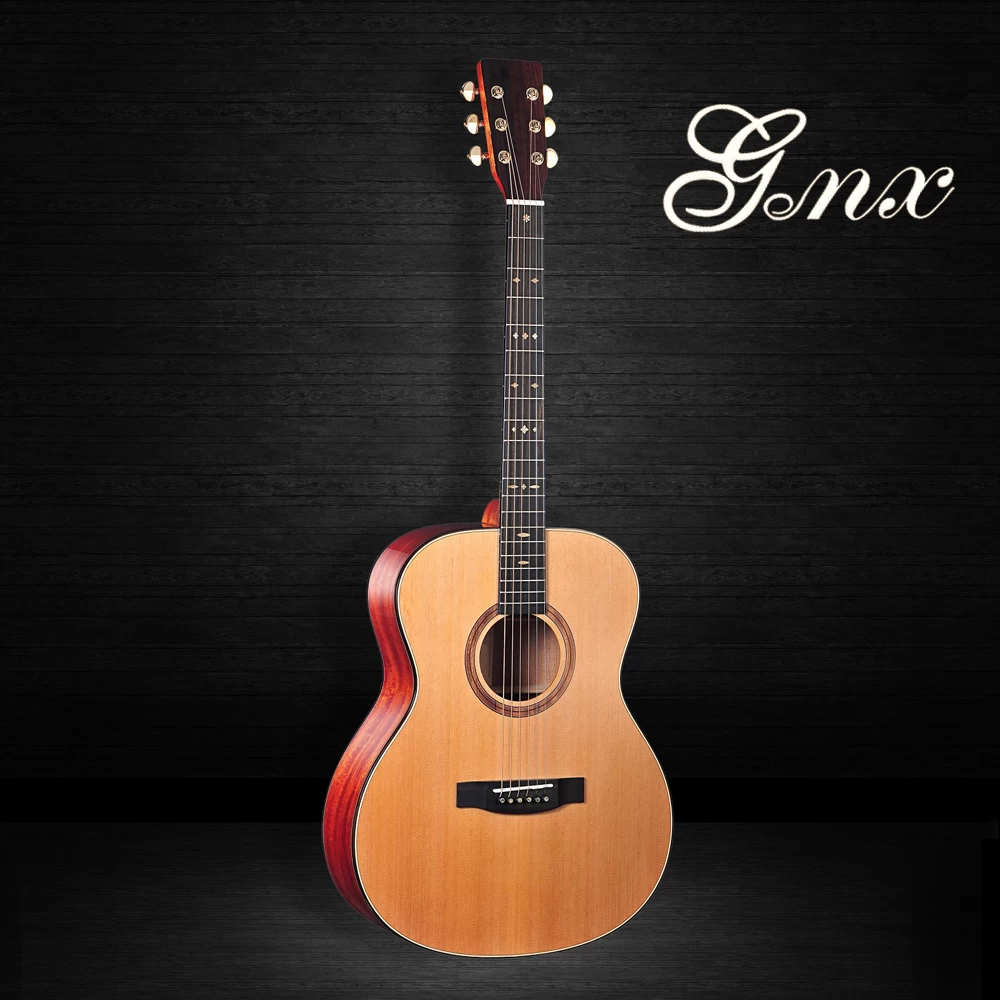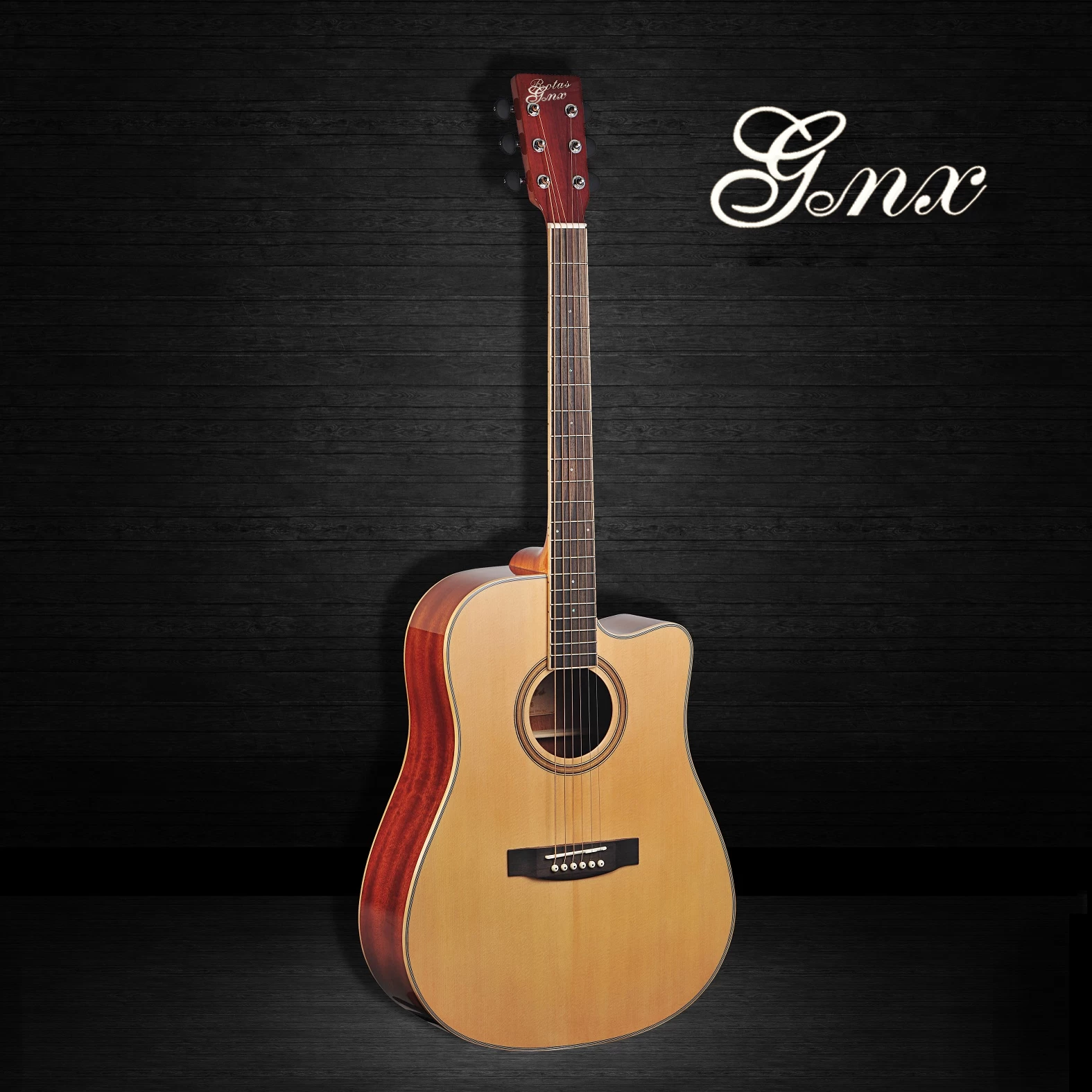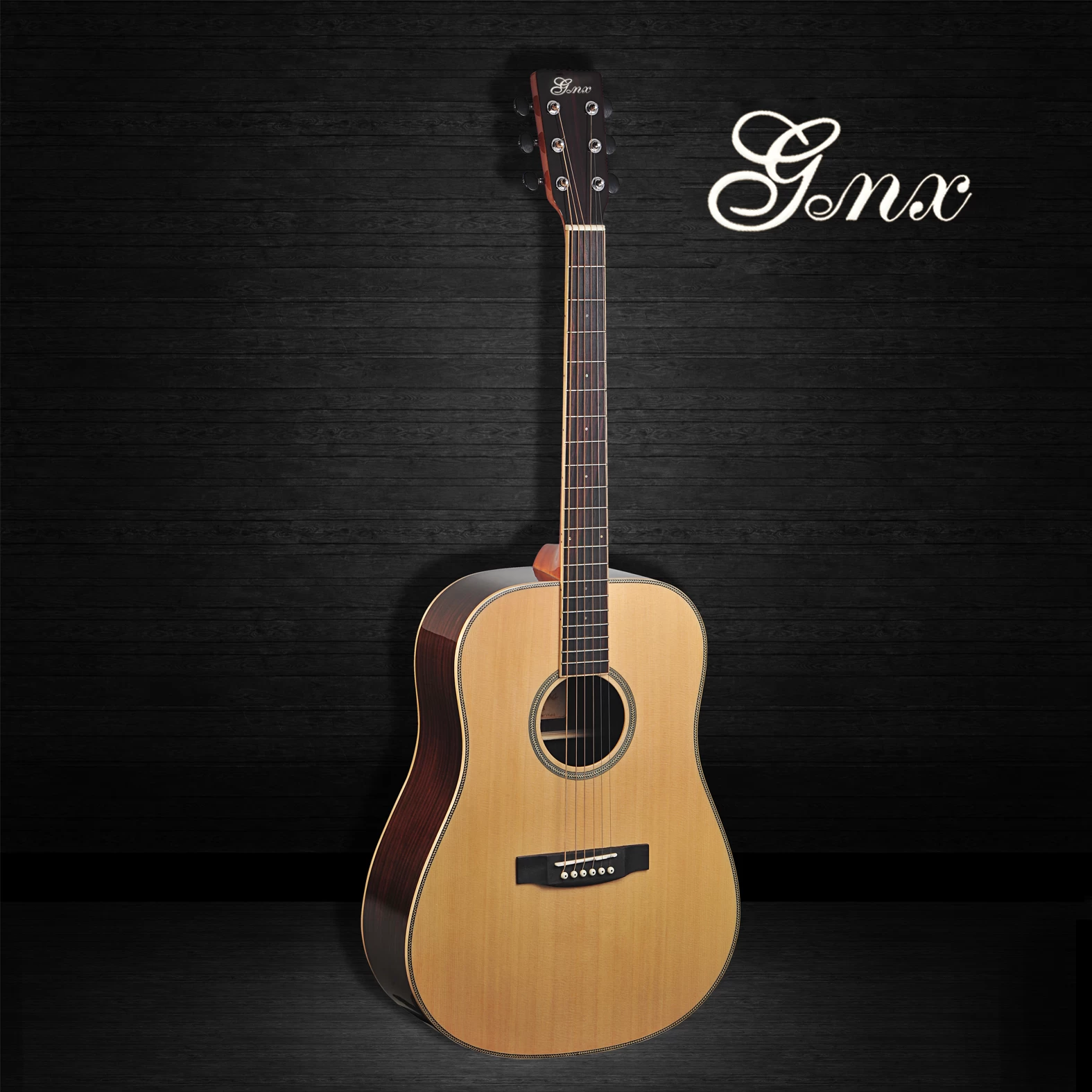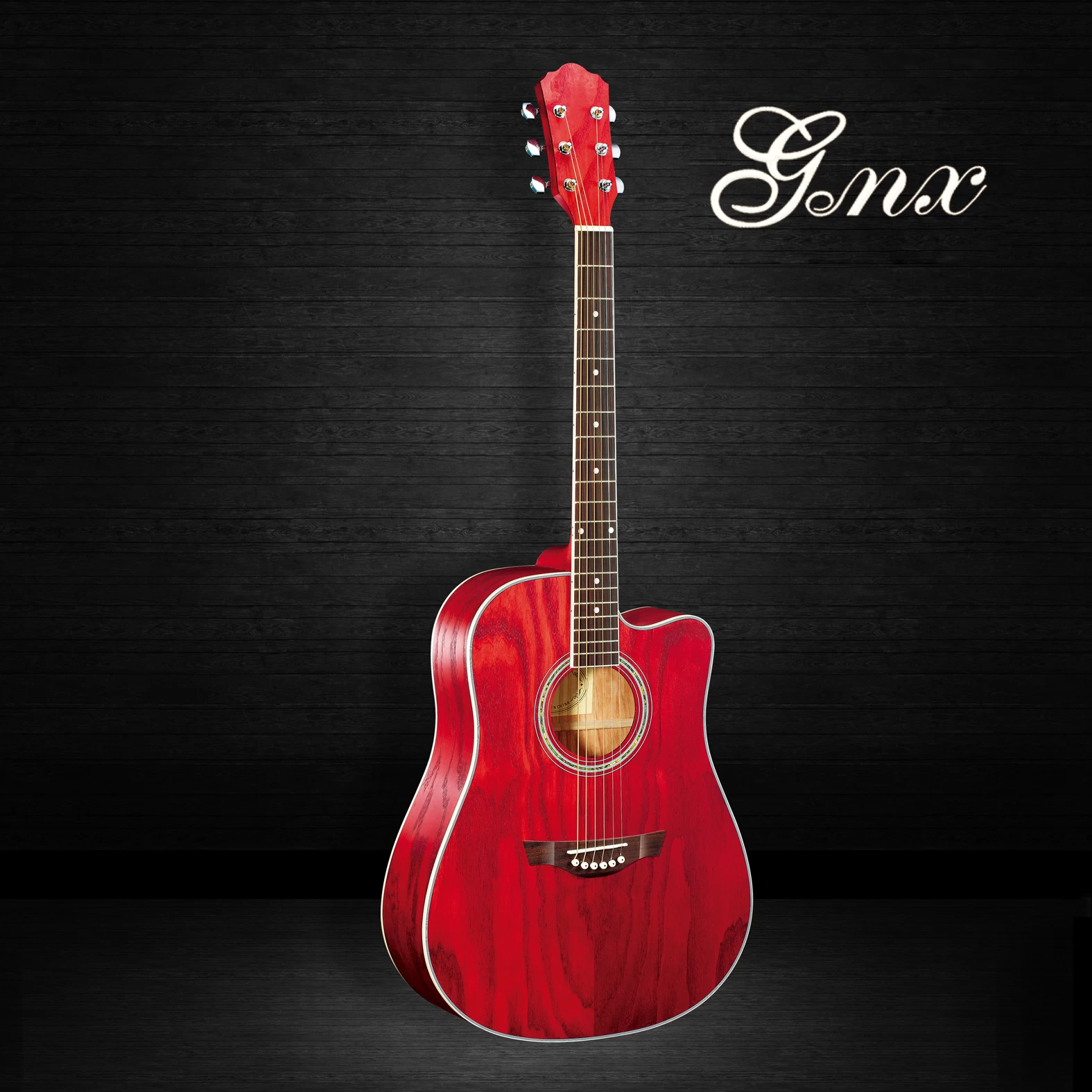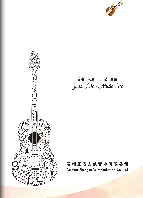Find Your Perfect Acoustic Guitar Acoustic Guitar Materials and How they Affect the Sound of your Gu
2018-05-12 17:30:03
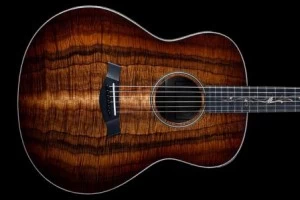
Some materials, such as certain woods, are simply better than others. Whilst with other materials, it comes to your personal preferences.
The object of this post is to give an overview of the different parts of the guitar and common materials used for those parts. In particular this will cover:
Top (soundboard) woods
Back and Sides
Neck
Fretboard
Bridge
Saddle
Nut
Strings
There will be links to separate posts in each section of this post if you want more details on any particular part of the guitar.
Top (Soundboard) Woods
The top of the guitar has the most impact on the sound of the guitar than any other part. It is the vibrations of the top that gives a guitar its distinctive tonal character.
Guitar top tone woods
So the wood that is used on the top is very important. If at all possible it is best to get a guitar with a solid wood top (as opposed to laminate wood) – if you are going to sacrifice anywhere to save on costs don’t make it the top.
The most common top wood is Spruce (and particularly Sitka Spruce). This is mostly due to the all round tonal characteristics and the broad dynamic range associated with this particular wood. But there are many other tone woods used for the top including but not limited to:
Koa
Mahogany
Cedar
These are the most common tops used but there are certainly other options.
Learn more about tone woods for the top here
Back and Sides
Next to the top wood the back and sides are the most important for the sound of the guitar.
Best woods for back and sides
A lot of acoustic guitars under around $1,000 will have laminate wood back and sides. Costs are better saved here than on the top. Most high end guitars use solid woods for the back sides and commonly include:
Rosewood
Mahogany
Koa
Walnut
Maple
Rosewood is perhaps the most preferred back and sides wood amongst high end guitars due to its tonal range and rich overtones – and its traditional use in acoustic guitar making. Mahogany is probably the next most common. But it mostly depends on the sound that you are after.
Different combinations of back and sides woods and top woods will produce very different tonal qualities. Often the wood on the back and sides is a different wood to the top wood but sometimes it is the same.
Learn more about back and sides tone woods
Neck Wood
Necks are most commonly made from Mahogany. This is less for sound reasons and more for strength reasons.
The neck of the guitar will make some difference tonally but it’s probably not noticeable to the average guitarist.
Neck’s are sometimes made from artificial materials too.
Learn more about neck woods
Fretboard (a.k.a. fingerboard)
fretboard materialThe material of the fretboard is mostly about playability and durability.
The fretboard’s material needs to be easy for the fingers to smoothly run along and also dense enough so that it isn’t easily damaged by the strings.
That density also plays a part sound-wise. The denser the wood on the fretboard the less the tone that will be absorbed into it – meaning more of the sound makes it into the soundboard.
The most common woods for fretboards on acoustic guitars are rosewood and ebony – and sometimes man made materials are also used. Maple, which is common on electric guitars, isn’t usually used on acoustic fretboards (I haven’t seen a maple fretboard an acoustic before).
Learn more about fretboard woods here
Bridge Wood
The Material used for the bridge is more important for the sound than you might think. Whilst it does need to be strong and durable (its holding the strings into the soundboard afterall) it also plays an important sound role because it is involved with transferring the vibrations from the strings into the soundboard.
If the wood (or other material) of the bridge is dense then this will lead to less energy loss so that more of the sound makes it into the soundboard.
Like the fretboard the most common woods for the bridge are rosewood and ebony and, also like fretboards, artificial materials are often used too.
Learn more about bridge materials here
Bridge Saddle
Part of the responsibility of that transfer of energy from the strings to the soundboard lies with the bridge saddle. The bridge saddle is in direct contact with the strings and transfers the vibrations from the strings into the bridge which then transfers it into the soundboard.
bridge saddle
Changing the material of the bridge saddle can make a noticeable difference to a guitar’s tone and sustain.
Saddles need to be hard and dense so that little energy is lost in the energy transfer – and they also need to be strong and dense so that the material isn’t worn away by the strings.
Plastic saddles can be problematic and eventually cause intonation and action issues as the material is worn away by the strings.
The most common materials for saddles are bone, plastic, artificial materials such as TUSQ and fossilized ivory.
Read more about saddle materials here
The Nut
The nut is usually made from the same material as the saddle and for the same reasons. The nut can have an effect on the sound, like the saddle, and needs to have the same dense, hard properties as the saddle as it is also in direct contact with the strings.
Learn more about nut materials here
Acoustic Guitar Strings
acoustic guitar stringsFinally we come to the strings. There are a few different materials that strings are made from and a few different techniques used for winding the strings.
Typically with steel strings there is a steel core which is wound with a different material which will affect both the tone of the guitar and how the guitar feels to play.
It’s a good idea to experiment with different strings to see which you like the sound of best and which feel the best to play for your purposes. You can narrow down your string choices (which will likely depend on your ability, the tone you are looking for and the style of music you like to play) at the links below.
Roimhe seo : HOW TO CHOOSE A SUPPER GUITAR





